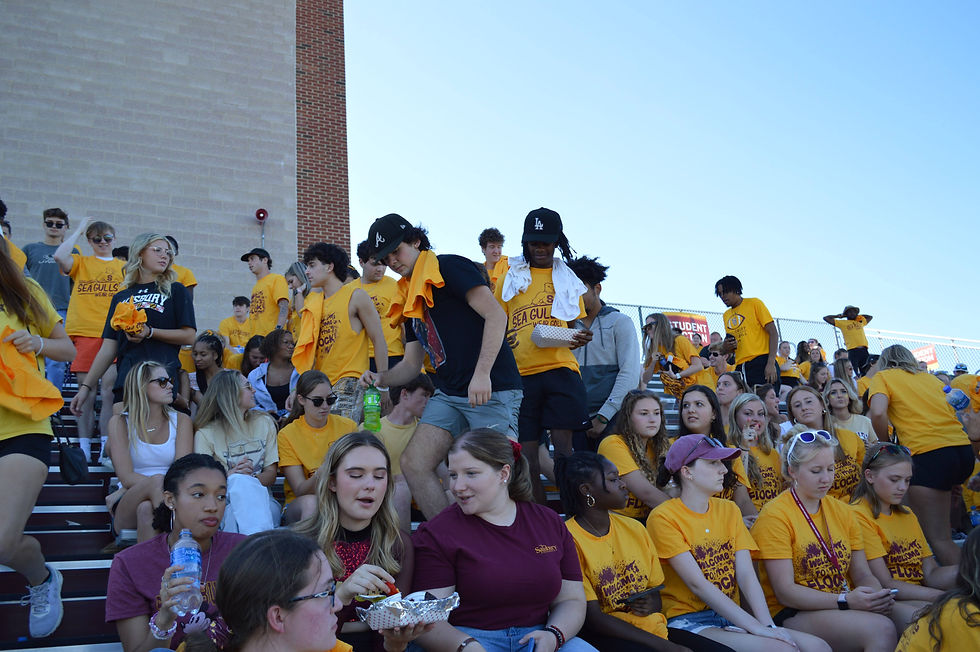SU senior makes strides into space at NASA Wallops Flight Facility
- Staff Writer

- Feb 17, 2020
- 3 min read
Shannon Bull, a computer science and applied math double major and a senior at Salisbury University, is paving the way NASA thinks about rocket launches.
Bull and her team of four at the NASA Wallops Flight Facility are developing new mission graphics replacement software that predicts how safe the rocket trajectory is upon take-off and flight.
This software is designed for the Safety Range Officers in the range control center.
Bull describes the SROs as “the guys with two big red buttons that arm and destruct the rocket if anything goes wrong.”
To get into the specifics, Bull is designing software that mainstreams the ancient programs NASA already has to assess the rocket data.
“The system is like 30 years old, the hardware isn’t even made anymore, so people have to scour eBay or Craigslist for parts,” Bull said.

For two years, Bull has been designing the new software by practicing on launches that go on periodically at Wallops to perfect the more commonsensical tools she’s adding to the program.
Bull highlights that her main initiative is to make the data that the rocket collects more user-friendly.
“I plan to update the graphics,” Bull said. ”The current data is just listed out in alphanumerics, making it difficult to understand, so I’ve added strip charts and color-coded threshold limits so we can visualize the data in an adequate and efficient way.”
Bull plans to use her new software side-by-side to the original software on the upcoming Antares rocket launch that was originally supposed to launch Feb. 9, but was delayed until the following Saturday due to high winds.
Bull’s team’s software is in the preliminary stages, so it won’t be directly implemented. But, it’ll run live next to it to compare the data she collects to the data the original software collects.

“The original software is going to be the one that’s officially used because mine hasn’t been safety tested yet, but mine’s going to be in the room next to theirs, where anyone in the range can come in and watch,” Bull said. “It’s going to track the rocket to make sure everything is going all right.”
With proper weather and the help of Bull’s technology, SA Wallops first rocket launch of 2020 was designated a success. Lifting off on Feb. 15, the Northrop Grumman Antares rocket departed from Wallops to make its journey to outer space. The Cygnus spacecraft is set to dock with the ISS on Feb. 18.
In regard to launch day, Bull talked about the excitement and energy that encompasses the station.
“Usually, everyone is super nice with typical Eastern Shore comfort, but on launch day, everyone is formal and dressed up,” Bull said. “It’s really cool to see the difference. For example, you get to hear the launch sequence, even if it’s from my cubicle in the corner. It’s like: RSO to TD, is everything ready?”
While Bull has been working on this project for two years, her start at NASA was much more toned down than her semi-independent position that she has now.
Bull explained her somewhat unique internship and how it progressed to the point she is at today.
“When I started, I had a mentor, and now I’m a different type of intern. There are normal interns, and there are pathways interns, which are real government employees, which is what I am now,” Bull said. “So now I’m kind of on my own.”
Bull has been working at NASA for two years, and the project plans to complete in 2022.
As she’s graduating, Bull has to make the decision to stay or to move onto other software engineering opportunities.
In whatever she does, Bull’s studies will take her beyond this planet and into outer space, designing and implementing software that changes the way our world operates.
By JARED SHEMONSKY
Staff writer
Featured photo from Amy Wojtowicz Images.





Comments